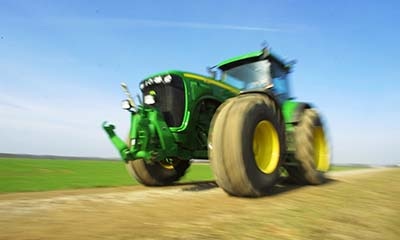
Armed with a degree in accounting and vivid memories of the 1980s farm crisis, Indiana farmer Jim McFarland shuns the idea of buying a new $400,000 combine just to lower his annual tax bill.
It doesn��’t make sense, he says, to write off a few thousand dollars in taxes one year and then make hefty annual payments on the machine.
“It may save 25% on your taxes that first year, but then the next five years, you have payments to make on it,” he says. “To me, the payments are a lot worse than paying the taxes on it.”

Farm equipment decisions need to take into account long-term cost savings. (Photo: Ingram Publishing/Thinkstock)
Economists agree that tax benefits should be a small part of equipment decisions. Return on investment (ROI), cost per acre, repairs, operating efficiency and size vs. cost should be considered.
McFarland, his brother Jerry and nephew Rick farm a combined 2,000 acres in central Indiana, most of which is rented. Their current fleet of older equipment meets their needs, at least for now. They repair what they can and replace what is no longer efficient. The latest additions are a 1979 John Deere tractor and a 2006 John Deere combine, both bought in 2013.
While tax benefits play a small role in their decisions on equipment, McFarland says they do pay attention to federal rules when it comes time to buy.
“If you need something, you want to make sure that you get in with a tax program, but you don’t want to be marketing grain or buying equipment for tax purposes. The tax part is only a small part,” he says.
Section 179 of the U.S. tax code, which allows for deductions on machinery, was passed late in 2015. Economists say that farmers must look at what they need versus what they want.
“Just because Section 179 exists does not necessarily mean you should take advantage of it in the current environment,” says Michael Langemeier, an ag economist at Purdue University. “People really need to look at the benefit cost of buying any piece of machinery and look at leasing as an option.”
Owning new equipment is not a bad thing. But with crop prices low and cash flow narrowing, economists say efficiency should be key to buying decisions. That relates to the cost per acre that the tractors, planters, combines and other equipment offer regardless how new or how big they are.
Farmers loaded up on new machinery the past few years when crop prices were high and cash flow was good, so there may not be a rush to buy more or replace what they have.
Consider leased v. owned. -- >>>
~~~PAGE_BREAK_HERE~~~
Machinery options
William Edwards, a farm management specialist in Iowa, says farm equipment decisions should always take into account long-term cost savings. Consider leased vs. owned, or hiring custom work instead of doing it yourself; consider entering joint ownership plans, or buying used instead of new.
Custom work in the Midwest remains somewhat rare, leasing is getting some attention, while partnerships, similar to what the McFarlands have, are often limited to family enterprises or close neighbors.
“I think in the last few years we have gone away from leasing simply because people had cash and wanted to own machines,” says Edwards. “When cash gets a little tighter, we see more interest in leasing.”
Leasing offers the benefit of lower monthly costs. On a $200,000 tractor, Edwards calculates an annual lease cost of about $40,000 compared with payments on a 6% five-year loan at $47,479 a year. Leasing preserves operating capital, and payments are tax deductible, but no equity is built up and the equipment goes back to the dealer when the lease is up.
.jpg?width=600&auto=webp&quality=80&disable=upscale)
Downsizing
Edwards says smaller equipment may be more efficient than a larger piece. One example he uses is a medium-sized combine with eight-row head compared with a smaller, six-row combine (see table).
Based on his calculations for 1,500 acres of corn and soybeans, the smaller combine can save $11,209 a year in ownership and operating costs. The average per acre cost for the smaller unit is about $30 vs. $37.44. The downside is the farmer spends more hours in the field — 313 vs. 234.
“You need to be very cautious if you need to sell machinery, particularly if you purchased it relatively recently,” he says. “There are some huge tax consequences for selling machinery that is not fully depreciated. That would add to taxable income.”
About the Author(s)
You May Also Like




